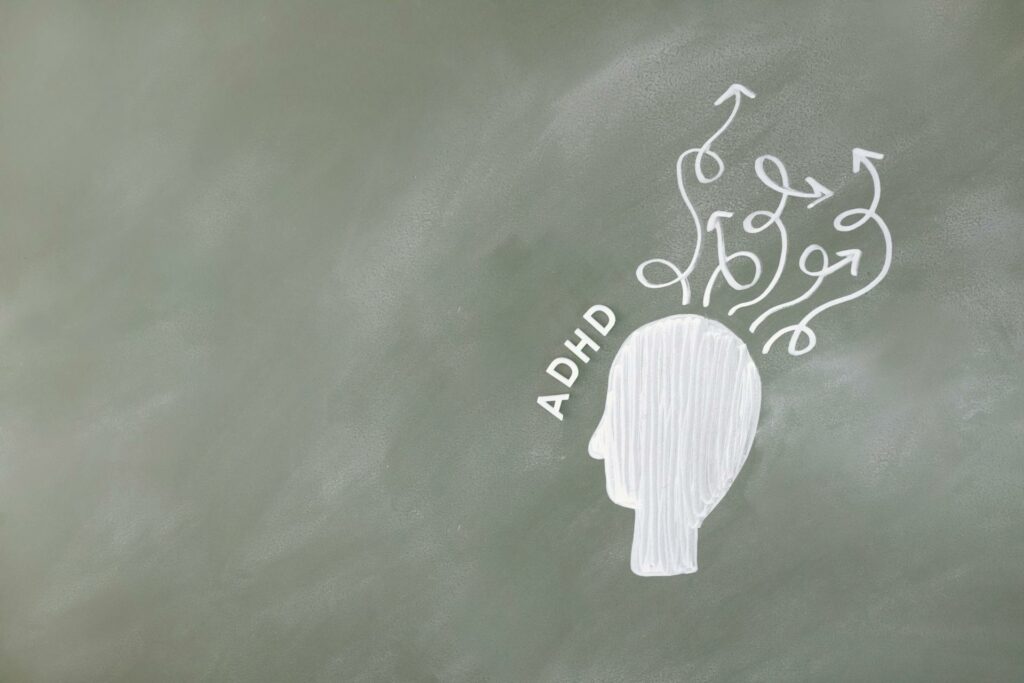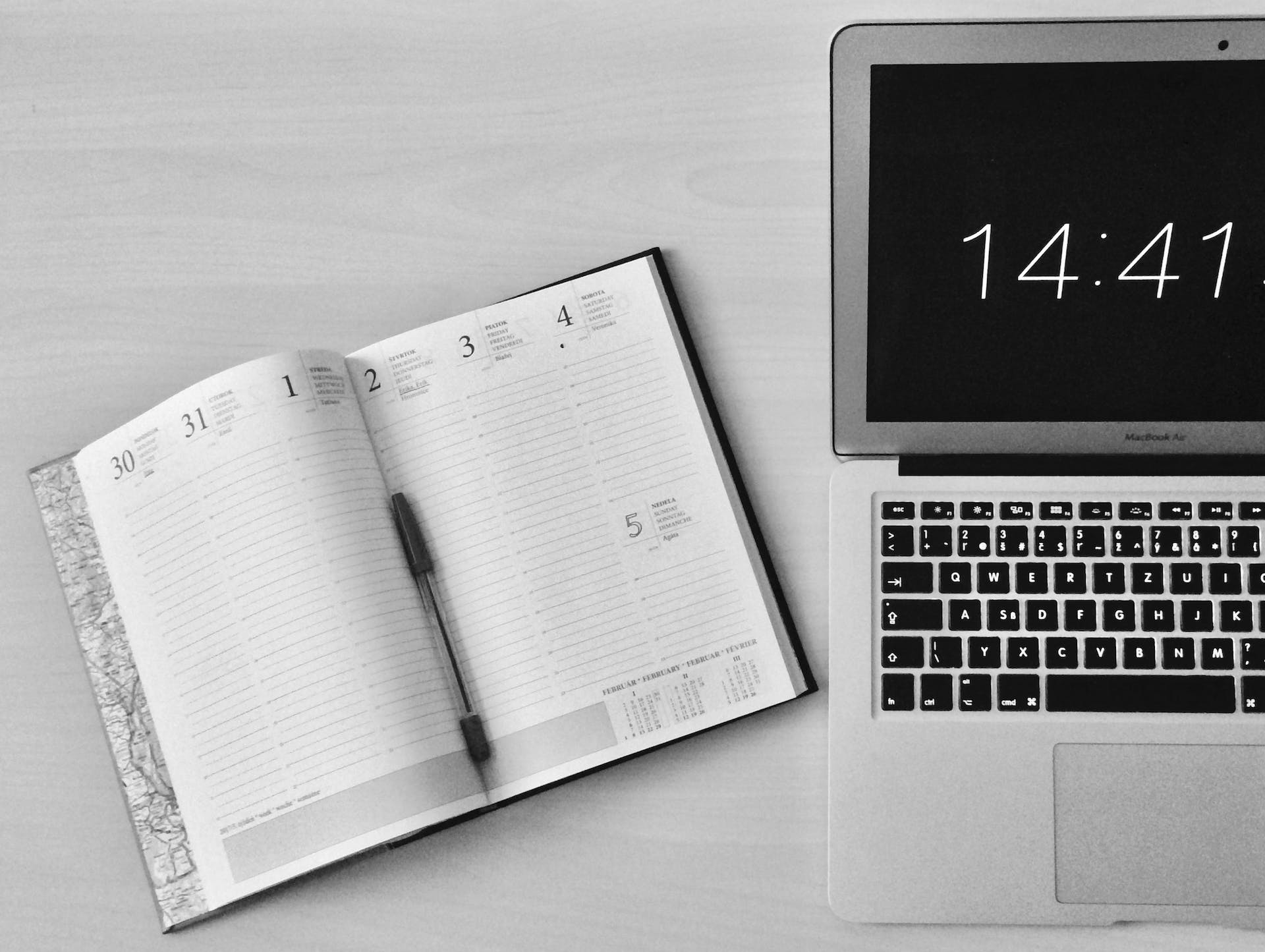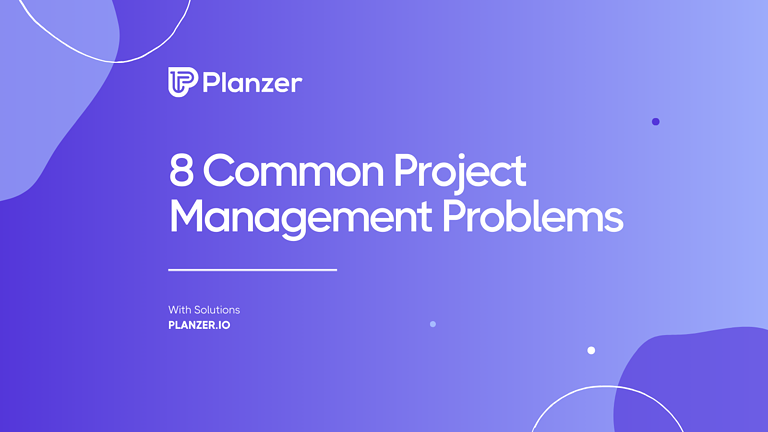Managing time is a skill most people struggle with, and for those with ADHD, it can feel impossible. But what if we told you that a timer could help manage ADHD symptoms and improve productivity?
In this post, we will dive into the benefits of using timers for ADHD management, the different types of timers suitable for people with ADHD, and the factors to consider when choosing a timer.
We will also provide tips on maximizing timer usage and avoiding common challenges associated with using timers. With the right approach, timers can be an effective tool for managing time and staying on track despite the challenges of ADHD. So let’s get started!
Understanding Time Management Challenges for ADHD Individuals

ADHD individuals often face difficulties with managing their time due to the inability to stay focused and organized. This leads to distractions, procrastination, and difficulty completing tasks within a given timeframe.
The inability to manage time can cause stress and anxiety, which further exacerbates the situation. To overcome these challenges, ADHD individuals can benefit from using a timer.
A timer helps them stay on track with their work by breaking down tasks into smaller, more manageable parts and providing structure and consistency to their day. It also helps them schedule breaks to avoid burnout and reset their brains for better concentration.
Benefits of Using Timers for ADHD Management
Incorporating timers into daily routines can have a significant positive impact on individuals with ADHD. In addition to helping with time perception and task completion, using timers can also reduce procrastination and increase productivity.
Timers create structure and routine, which is crucial for individuals with ADHD who often struggle with organization and staying on task.
By breaking down tasks into smaller, more manageable steps, individuals can prioritize their workload and maintain focus without feeling overwhelmed. Furthermore, taking scheduled breaks can prevent burnout and provide a reset for the brain, ultimately leading to improved focus and reduced stress levels.
Improved Focus and Productivity
Maintaining focus and productivity can be a significant challenge for individuals with ADHD, often leading to feelings of frustration and low self-esteem.
Using a timer can help break down tasks into manageable chunks, increasing the likelihood of task completion and reducing procrastination. By setting specific time limits for each task, individuals with ADHD can create a sense of urgency, leading to improved focus and productivity.
Additionally, incorporating frequent breaks into the schedule helps avoid burnout and allows the brain to reset, improving overall performance. In short, using timers can be an effective tool for individuals with ADHD to improve their focus and productivity while managing their time more efficiently.
Reduced Stress and Anxiety

Living with ADHD can be challenging, and individuals with this condition often feel overwhelmed by the demands of daily life. One of the most significant challenges is managing time effectively, which can lead to stress and anxiety. However, incorporating timers into daily routines can help manage these feelings by breaking down tasks into smaller, manageable chunks.
Using a timer consistently can create a sense of structure and routine for individuals with ADHD, reducing feelings of uncertainty and anxiety.
Timers can also help avoid distractions, allowing individuals to focus on one task at a time. Breaking up larger tasks into timed intervals makes them less daunting and more achievable, increasing confidence and reducing stress levels overall.
With these benefits in mind, incorporating timers into daily routines can effectively manage stress and anxiety associated with ADHD.
Provides Structure and Consistency
Creating structure and consistency can be challenging for individuals with ADHD, but incorporating timers into daily routines can help. Using timers to break down tasks into manageable chunks of time can reduce feelings of overwhelm and procrastination.
Additionally, setting a timer for breaks or transitions can help shift focus and stay on task, leading to increased productivity. By using timers consistently, individuals with ADHD can develop a routine and improve their time management skills.
Overall, incorporating timers into daily life can provide much-needed structure and consistency for individuals with ADHD.
Different Types of Timers Suitable for ADHD Individuals
Choosing the right type of timer is crucial for managing ADHD effectively. Various types of timers are available that cater to different needs and preferences.
For instance, visual timers, which use colours and shapes to represent time, can be helpful for individuals who find it challenging to visualize time.
Digital timers, on the other hand, clearly indicate how much time has passed and are ideal for tasks that require precision timing. Pomodoro timers break down work into intervals with short breaks in between, making them useful for individuals looking to improve focus and productivity. Multi-sensory timers use both visual and auditory cues to represent time, making them more engaging and interactive for ADHD individuals.
Time-tracking apps can also be a helpful tool for managing tasks and improving time management skills.
Visual Timers
For individuals with ADHD, managing time can often be challenging. Visual timers provide a helpful solution to this problem by enabling them to understand the passage of time better. These timers use pictures, shapes, and colours to represent time, making it easier for ADHD individuals to visualize how much time has passed and how long they have left for a particular task.
This can be especially useful for tasks that require a specific amount of time or when managing transitions between activities. Choosing the right type of visual timer will depend on individual preferences and needs, but options include digital clocks with large display screens or hourglass timers.
Overall, incorporating visual timers into daily life can significantly improve productivity and reduce stress levels.
Pomodoro Technique
The Pomodoro Technique, named after the tomato-shaped kitchen timer used by its creator Francesco Cirillo, is a time management method that has proven to be beneficial for individuals with ADHD. The technique involves breaking work into intervals of 25 minutes, separated by short breaks.
Using a timer to enforce these intervals can help individuals with ADHD stay focused and avoid distractions. By breaking tasks down into manageable intervals, the Pomodoro Technique helps increase productivity while reducing stress and burnout.
With the availability of many customizable timer apps for smartphones and computers, individuals with ADHD can use this technique to fit their needs.
Time Timer Watch Plus
The Time Timer Watch Plus is a highly effective tool for individuals with ADHD who struggle with time management.
This watch features a visual timer display that clearly shows how much time is remaining, helping to reduce anxiety and increase productivity. The Time Timer Watch Plus can be set for different intervals, making it perfect for various tasks.
Additionally, the watch includes an alarm feature to notify the user when the time is up, helping individuals stay on track and focused on their tasks.
With its portability and ease of use, the Time Timer Watch Plus is an excellent choice for anyone looking to improve their time management skills.
Factors to Consider When Choosing a Timer for ADHD Management

Choosing the right timer is essential for ADHD individuals to manage their time effectively. Several factors should be considered when selecting a timer, such as its type, size and portability, sound and alert options, battery life, and additional features.
Physical timers like kitchen or sand timers can be helpful for those who prefer a tangible device, while digital timers offer more flexibility in terms of customization and sound options. Choosing a portable and durable timer to withstand frequent use is also essential.
By considering these factors, individuals with ADHD can select a timer that suits their needs and helps them focus on their tasks.
Ease of Use
When it comes to managing time with ADHD, ease of use is key. A timer that’s difficult to operate or understand can add to a sense of overwhelm and frustration.
Look for a timer with straightforward controls and a clear display to start and stop the timer as needed quickly. Consider a timer with audible alerts or vibrations to help with time awareness, especially if you tend to get lost in your work. Portability is also essential for managing time on the go. Choose a timer that fits your individual needs and preferences for the best results.
Customization Features
When it comes to managing time with ADHD, customization is key. Customizable timers are an excellent tool for individuals with ADHD as they provide the ability to personalize their experience. These timers allow users to set specific time intervals and adjust alarm volume and tone according to their preferences.
Some timers even offer visual cues or colour-coded alerts to help with focus and task tracking, making them a practical accessory for ADHD management. Additionally, choosing a timer with easy-to-use buttons and a clear display can be especially helpful for individuals with ADHD who may struggle with attention and focus.
Portability and Durability
When it comes to managing ADHD, portability and durability are crucial factors to consider when choosing a timer.
A compact and lightweight timer can be easily carried in your backpack, purse, or pocket, making it convenient for use on the go. A durable timer made from sturdy materials can also withstand accidental drops and bumps, ensuring its longevity.
Not all timers are created equal, so choosing one that fits your lifestyle and individual needs is essential. Some timers come with additional features such as vibration or sound alerts to help keep focus and track time efficiently.
When considering a timer’s portability and durability, consider how you plan to use it and what features will benefit you the most in managing your ADHD.
Tips for Maximizing Timer Usage for ADHD Management
For individuals with ADHD, managing time can be challenging. However, using a timer is a practical and effective solution that can help maximize productivity while reducing stress and anxiety. By breaking down tasks into manageable chunks of time, individuals can set realistic goals for each timed activity and prioritize them accordingly.
Additionally, using different types of timers for various tasks, such as Pomodoro timers for focused work and interval timers for exercise breaks, can help maintain consistent progress throughout the day.
Experimenting with different timer apps or devices can also aid in finding the one that works best for individual needs. Don’t forget to take breaks and reward yourself after completing timed tasks to maintain motivation and stay on track.
Scheduling Breaks in Between Tasks
Using a timer can be an effective way for individuals with ADHD to manage their time more efficiently. One helpful strategy is to schedule short breaks in between tasks, which can help reduce feelings of overwhelm and increase productivity.
Setting specific goals for each task and using the timer to hold oneself accountable for staying focused during that time makes it easier to develop a routine that works. Different types of timers, such as a visual countdown or a smartphone app, can be used depending on individual needs.
Remember to be flexible and adjust your schedule and timer usage as needed to accommodate changes in your daily routine.
Setting Realistic Task Durations and Time Limits
Individuals with ADHD often struggle to estimate how long tasks will take or get sidetracked during a task, leading to frustration and disappointment.
Setting realistic task durations and time limits can help individuals better manage their time and improve productivity. Breaking down larger tasks into smaller, more manageable ones can also be helpful.
Using a timer can provide structure and accountability, helping to keep individuals focused and on task. It’s essential to find a timer that works best for you on your phone or computer, whether physical or digital. Experimenting with different techniques, such as the Pomodoro method, can also be helpful in managing time with ADHD.
Making Timers Fun and Interactive
Using timers for ADHD management doesn’t have to be boring or mundane. In fact, making it fun and interactive can help increase motivation and engagement. By using colourful and visually appealing timers, the experience can become more enjoyable.
You can also try gamifying the use of timers by setting up challenges or rewards. For instance, if you complete a task before the timer goes off, you get a treat or reward yourself with a short break.
This approach can create friendly competition with yourself and lead to increased productivity. Remember to find a timer that works for your preferences, whether it’s a physical timer or an app on your phone.
Challenges to Avoid When Using Timers for ADHD Management
While timers can be an effective tool for managing time with ADHD, it’s essential to avoid specific challenges that may arise.
For instance, relying too heavily on timers can lead to feelings of pressure and anxiety. It’s best to use timers in conjunction with other time management techniques, such as prioritizing tasks and creating to-do lists.
Additionally, setting realistic goals and intervals for the timer can prevent burnout and ensure that individuals stay productive without becoming overwhelmed. Lastly, multitasking while using a timer should be avoided as it can hinder productivity and focus.
Temptations to Extend Task Duration
One of the most common challenges when using timers for ADHD management is the temptation to extend the duration of a task.
This can be especially true if the task is enjoyable or stimulating, making it difficult to stop even after the timer has gone off. However, it’s essential to set realistic time limits and stick to them, even if it means stopping a task before it feels complete. This can help prevent burnout and ensure that you can stay on track with your other tasks for the day.
Another potential challenge when using timers is getting distracted by other tasks while the timer runs. To avoid this, try breaking larger tasks into smaller sub-tasks and setting separate timers for each one. This approach can help keep you focused on one specific task at a time and prevent interruptions from derailing your progress.
Overall, using timers can be an effective tool for managing time with ADHD, as long as you stay mindful of these common pitfalls and work to overcome them.
Interruptions and Switching Gears During Tasks
One of the biggest challenges when using timers for ADHD management is dealing with interruptions and switching gears during tasks. For someone with ADHD, it can be challenging to maintain focus and stick to a task for an extended period of time. Interruptions from phone calls, notifications, or people can derail your timer-based productivity plan. It’s important to set boundaries and create a distraction-free environment when using timers for productivity.
Taking breaks between tasks and scheduling rest time can help prevent burnout and increase productivity in the long run. Additionally, breaking larger tasks into smaller sub-tasks and setting separate timers for each one can help avoid distractions and interruptions. With these strategies in place, individuals with ADHD can better manage their time and stay on track towards their goals.
Conclusion
In conclusion, time management is crucial for individuals with ADHD. Timers can play a significant role in managing time and helping individuals stay focused, productive, and less stressed.
With various types of timers available in the market, choosing one that suits your needs and preferences is essential. Additionally, setting realistic task durations, taking scheduled breaks, and making timers fun and interactive can help maximize their usage.
However, avoiding temptations to extend task durations or switch gears during tasks is essential as they can hinder productivity. To learn more about practical time management tips for individuals with ADHD, read our comprehensive guide now.
FAQ
How can using a timer help with managing ADHD symptoms?
Using a timer can be an effective tool for managing ADHD symptoms. Timers can help individuals with ADHD stay focused on tasks and break up larger tasks into smaller, more manageable segments. Additionally, they can create a sense of urgency and accountability while providing visual and auditory cues that help structure time management.
By incorporating timers into their daily routine, individuals with ADHD may find it easier to stay on track and accomplish tasks more efficiently.
What are some recommended time management techniques for individuals with ADHD?
For individuals with ADHD, using a timer to break tasks into manageable increments can be helpful. Prioritizing tasks and creating to-do lists can also help manage time and reduce stress. Setting realistic goals and deadlines is also effective.
Additionally, seeking support from a therapist or coach specialising in ADHD can provide additional strategies and tools for time management. With these techniques, individuals with ADHD can better manage their time and increase productivity.
How can I make using a timer a habit in my daily routine?
To make using a timer a habit in your daily routine, try setting reminders on your phone or computer to use it regularly. Start small by using a timer for short tasks and gradually increase the time.
Use a timer for activities like studying, exercising, and completing household chores. You can also keep a timer visible in your workspace as a reminder to use it regularly.
With practice and consistency, using a timer can become an automatic part of your daily routine.



![Task Management vs Project Management [Ultimate Guide]](https://planzer.io/wp-content/uploads/2023/06/Task-Management-vs-Project-Management-Ultimate-Guide-768x432.png)